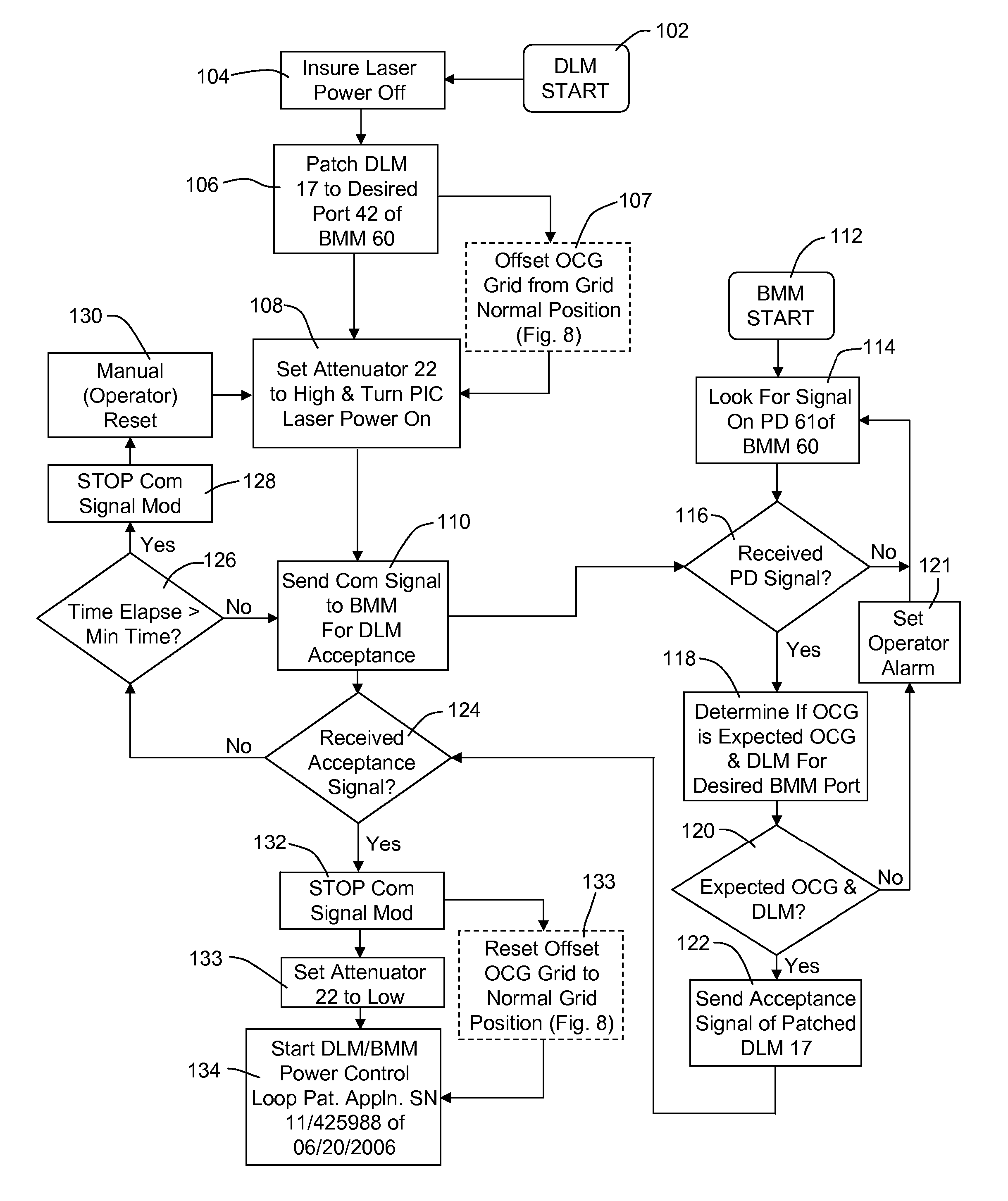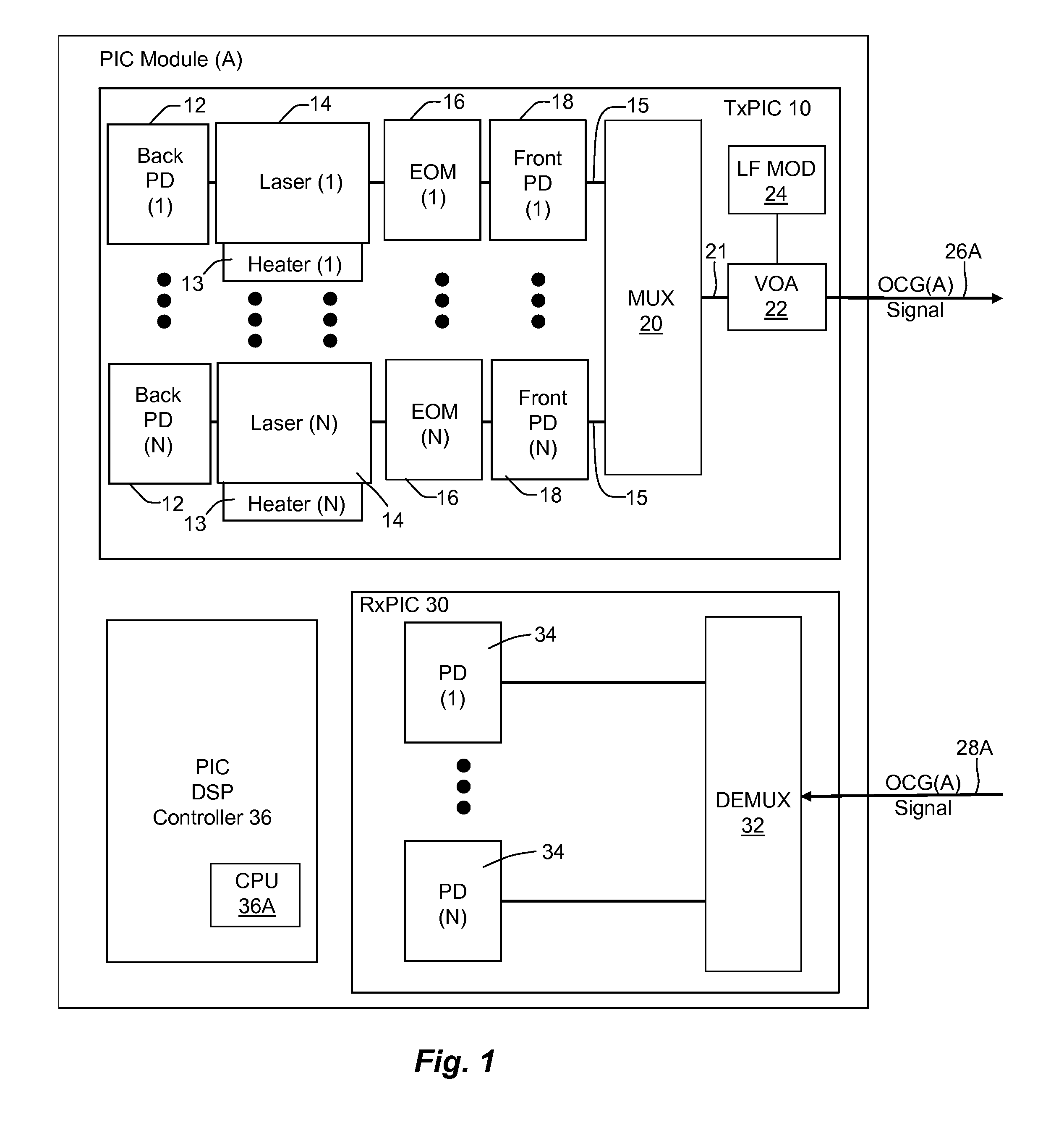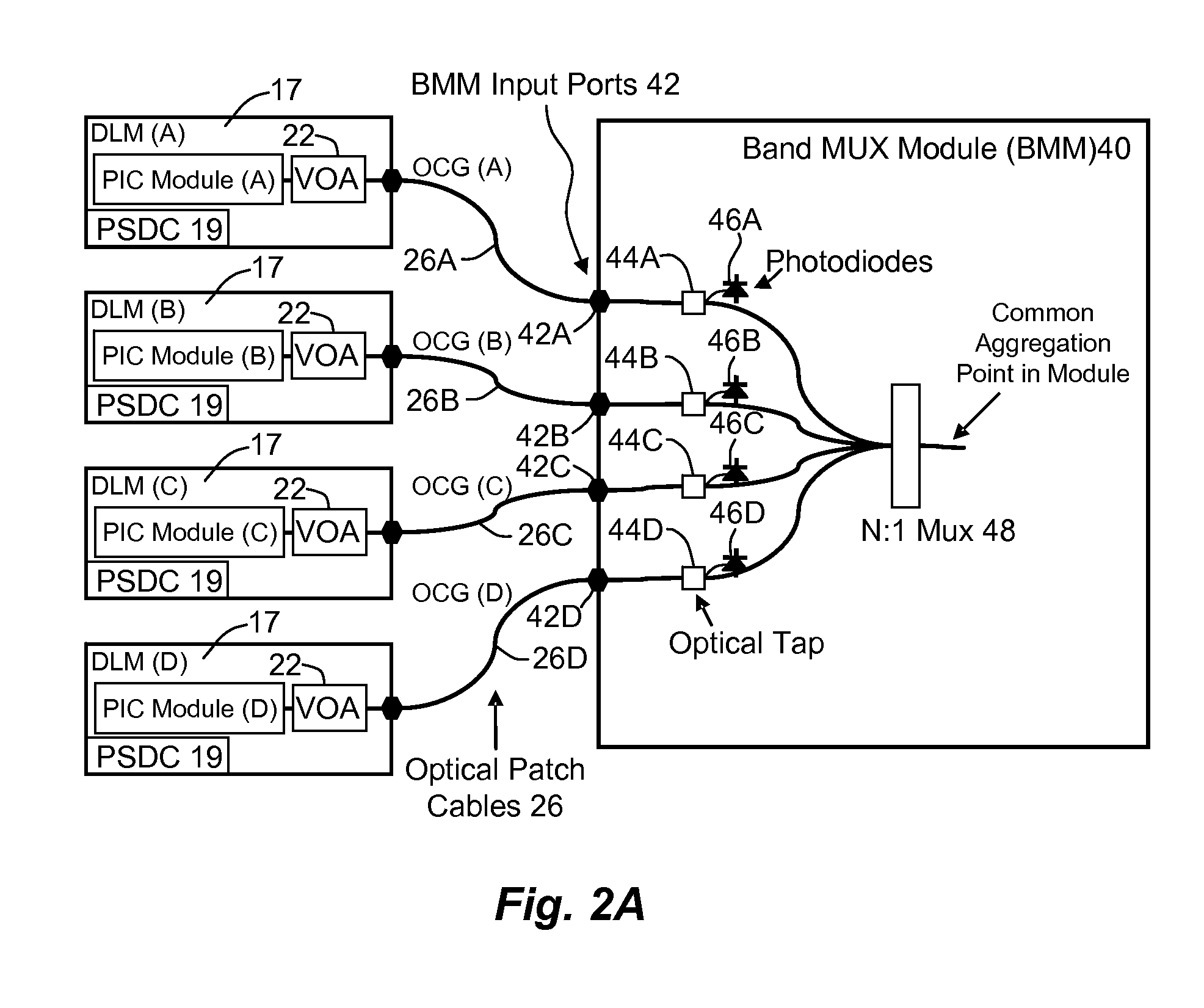Optical autodiscovery for automated logical and physical connectivity check between optical modules
- Summary
- Abstract
- Description
- Claims
- Application Information
AI Technical Summary
Benefits of technology
Problems solved by technology
Method used
Image
Examples
Embodiment Construction
[0039] Before delving into the optical autodiscovery embodiments of this disclosure, an explanation of the exemplary modules in the implementation of the disclosed embodiments should be first explained. Reference is first made to FIG. 1 which discloses a photonic integrated circuit (PIC) group designated as PIC module A. PIC module A comprises a chip set of two PIC chips. Although the chip circuits could, alternatively, be integrated on a single chip. The transmitter PIC or T×PIC chip 10 contains a group of optical signal channels (1) to (N) where each channel 15 minimally includes a laser 14 and an electro-optical modulator (EOM) 16. The lasers (1) . . . (N) may each have an associated heater 13 which is control via a wavelength locker (not shown) to maintain a peak wavelength forming a wavelength grid of signal channels 15 across the channel array of T×PIC 10. Each channel 15 may include additional electro-optic elements, such as shown here comprising back and front monitoring pho...
PUM
 Login to View More
Login to View More Abstract
Description
Claims
Application Information
 Login to View More
Login to View More - R&D
- Intellectual Property
- Life Sciences
- Materials
- Tech Scout
- Unparalleled Data Quality
- Higher Quality Content
- 60% Fewer Hallucinations
Browse by: Latest US Patents, China's latest patents, Technical Efficacy Thesaurus, Application Domain, Technology Topic, Popular Technical Reports.
© 2025 PatSnap. All rights reserved.Legal|Privacy policy|Modern Slavery Act Transparency Statement|Sitemap|About US| Contact US: help@patsnap.com



